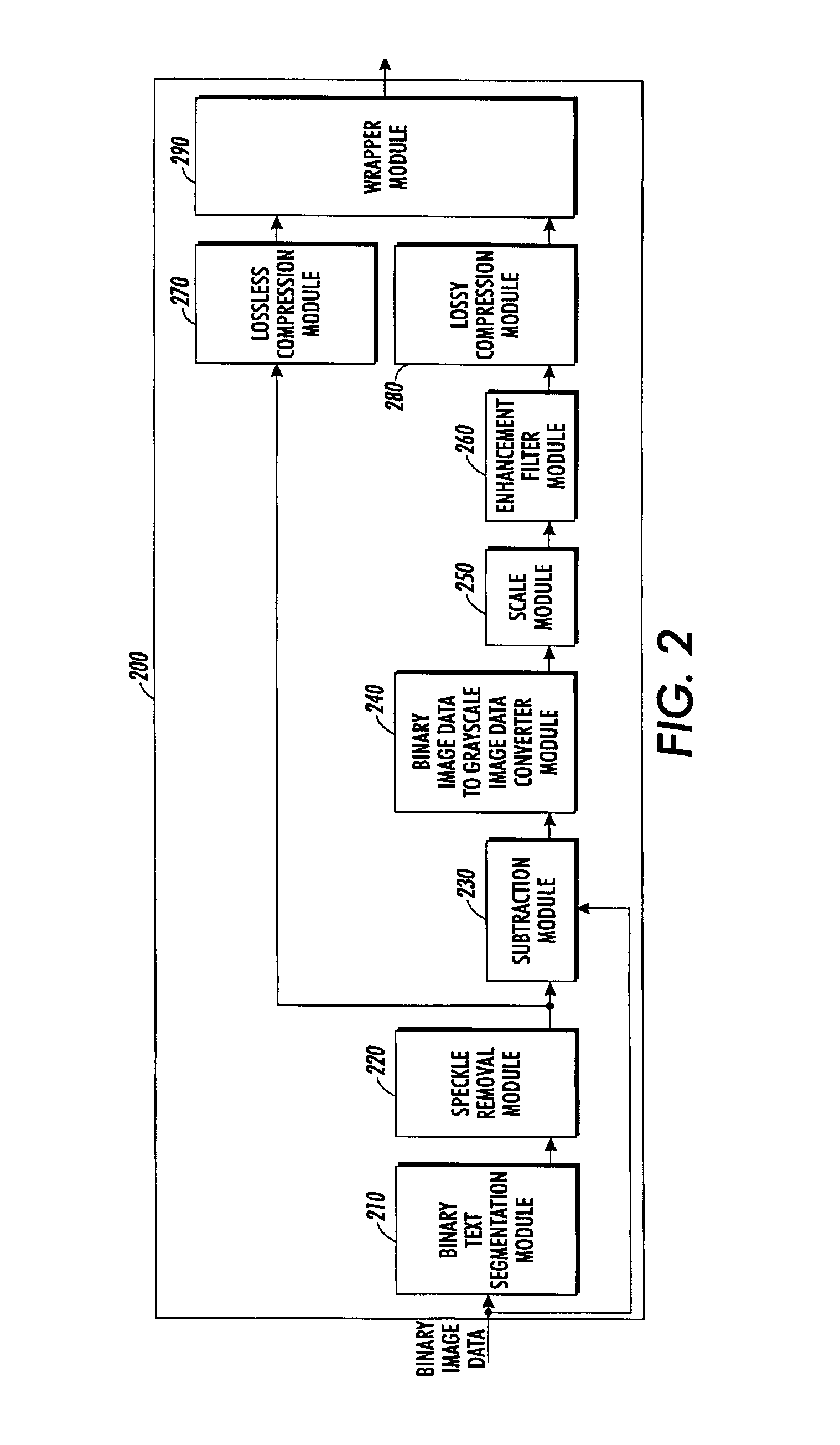Reformatting binary image data to generate smaller compressed image data size
a binary image data and compressed image technology, applied in the field of reformatting binary image data, can solve the problems of large bandwidth consumed by large binary image data, inability to compress binary image data error-diffused using ccitt g3/g4, and the combination of binary image data containing both high spatial frequency data and smoothly varying low spatial frequency data may not be optimally compressed. , to achieve the effect of enhancing binary image data and/or gray scale image data
- Summary
- Abstract
- Description
- Claims
- Application Information
AI Technical Summary
Benefits of technology
Problems solved by technology
Method used
Image
Examples
Embodiment Construction
[0028] Various exemplary embodiments of systems and methods according to this invention relate to scanned and / or printed color and / or black and white documents converted into binary image data. The systems and methods reformat binary image data to produce small, highly-compressed image data files that capture the original document content. According to various exemplary embodiments of systems and methods, output files are generated in accordance with the MRC format, which includes both TIFF and PDF standards, as well as the PostScript standard. While various exemplary embodiments of systems and methods refer to the MRC format, it should be appreciated that the techniques described herein may be implemented in other formats to achieve a desired result.
[0029]FIG. 2 illustrates a binary image data to MRC format generating system 200 according to one embodiment of the invention. The binary image data to MRC format generating system 200 may be a xerographic printer, a marking device, a ...
PUM
 Login to View More
Login to View More Abstract
Description
Claims
Application Information
 Login to View More
Login to View More - R&D
- Intellectual Property
- Life Sciences
- Materials
- Tech Scout
- Unparalleled Data Quality
- Higher Quality Content
- 60% Fewer Hallucinations
Browse by: Latest US Patents, China's latest patents, Technical Efficacy Thesaurus, Application Domain, Technology Topic, Popular Technical Reports.
© 2025 PatSnap. All rights reserved.Legal|Privacy policy|Modern Slavery Act Transparency Statement|Sitemap|About US| Contact US: help@patsnap.com



